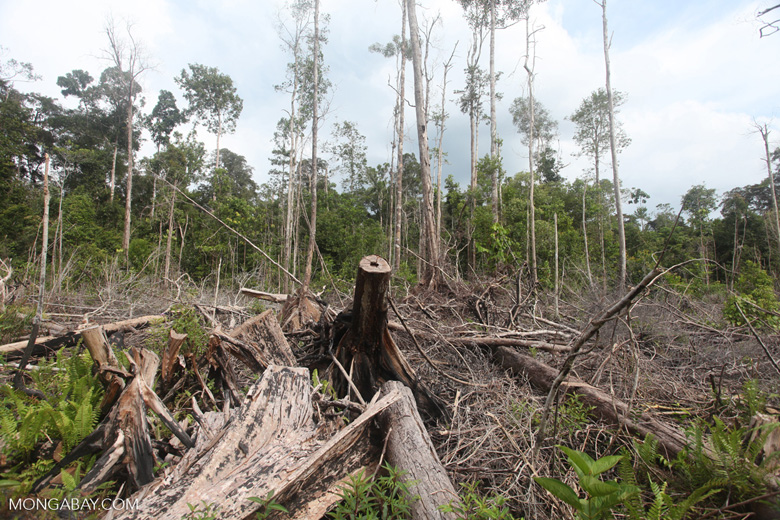- An analysis of 133 studies found natural regeneration was more effective than active, human-driven restoration at restoring tropical forests.
- The study refutes conventional wisdom that holds that actively restoring a forest is better than letting it grow back by itself.
- The authors say previous research didn’t control for key factors, which skewed results and made it seem like natural regeneration was less effective than it actually may be.
- The say large-scale restoration projects, which tend to favor active restoration, should consider natural regeneration as a way to more effectively achieve their goals while saving money that could be used to scale-up forest restoration worldwide.
When it comes to restoring deforested landscapes, letting them regenerate naturally through passive means is generally cheaper than human-driven, so-called “active,” restoration techniques like re-planting. But a new study finds it can actually also be more effective in tropical ecosystems.
The authors say that letting tropical forests regenerate by themselves could help further large-scale restoration goals while at the same time saving money that could help scale-up forest restoration worldwide.
The study, published recently in Science Advances, analyzed the findings from 133 other studies conducted across 115 landscapes to compare natural and active regeneration of tropical forests. Its results indicate natural restoration techniques were more successful than active restoration at restoring the biodiversity levels of birds, plants, and invertebrates, as well as vegetation structure.
Specifically, the study found biodiversity in naturally regenerated landscapes was 34 percent to 56 percent higher and vegetation structure 19 percent to 56 percent higher than in areas that had been actively restored.
“These findings suggest that lower cost approaches to restoring biodiversity and vegetation structure in tropical forests can actually be more effective than active restoration,” study lead author Renato Crouzeilles, an associate researcher at the International Institute for Sustainability, said in a statement.

Crouzeilles clarified that the success of natural regeneration over active restoration only became apparent when certain factors were controlled; namely, the amount of forest, precipitation levels, time passed since restoration activities began and previous disturbance. The authors write that these need to be controlled to avoid misleading results, which they say may be to blame for the common perception that natural regeneration of tropical forests “has limited conservation value.”
The study comes with caveats. One is that its analysis of biodiversity took into account species abundance and richness but not composition, which is the proportional presence of each species. The authors explain that species composition takes “orders of magnitude” more time to bounce back than abundance or richness, and can mean that biodiversity levels may not be as restored as their study purports.
Crouzeilles also says he and his team did not look at the socio-economic contexts of the study areas, which could be important to restoration success. “Large-scale forest landscape restoration will therefore be reached only if cost-effective approaches are spatially identified and competition with agricultural land uses is minimized.”
Still, the authors write that their findings indicate natural regeneration may be a more effective way to restore damaged tropical forests than previously assumed, and should be considered when developing future restoration projects and policies.
Forest restoration is currently playing a big role in international climate agreements as governments band together to lower greenhouse gas emissions. The general reasoning behind this is that as forests recover, they will sequester carbon and mitigate climate change while at the same time providing habitat for wildlife and ecosystem services for human communities.
The authors say their findings show passive regeneration could be just as or even more effective than the active techniques often employed in large-scale tropical restoration – and could potentially save money that could be directed at conserving more degraded forests.
“One of the major international and national policy priorities for the upcoming years is to align the identified patterns of biophysical and ecological conditions where each or both restoration approaches are more successful, cost-effective and compatible with socio-economic incentives for enabling scaling up tropical forest restoration,” Crouzeilles said.
“Clearly, both approaches are urgently needed to achieve ambitious global forest restoration targets.”
Citation:
- Crouzeilles, R., Ferreira, M. S., Chazdon, R. L., Lindenmayer, D. B., Sansevero, J. B., Monteiro, L., … & Strassburg, B. B. (2017). Ecological restoration success is higher for natural regeneration than for active restoration in tropical forests. Science Advances, 3(11), e1701345.
FEEDBACK: Use this form to send a message to the editor of this post. If you want to post a public comment, you can do that at the bottom of the page.
